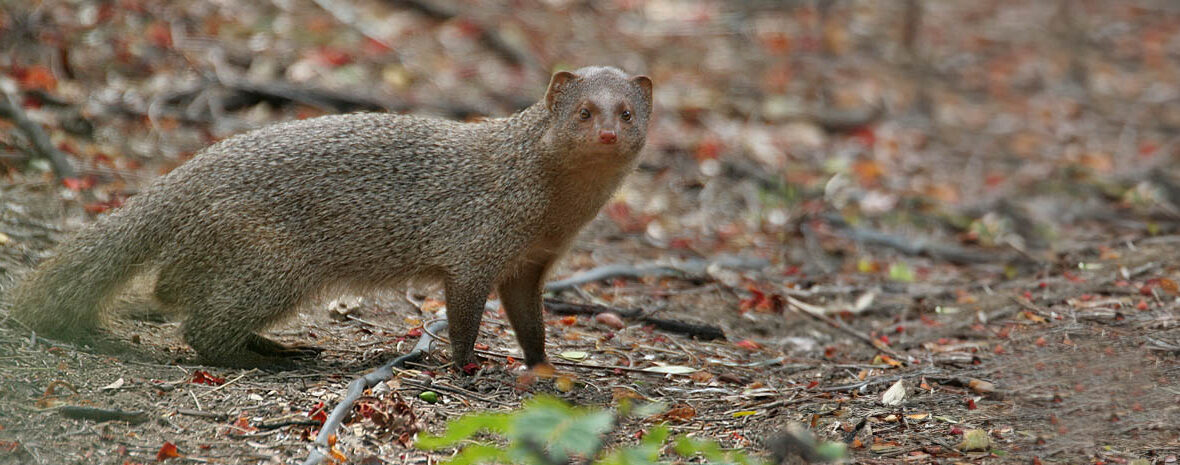
The Indian gray mongoose, aka common gray mongoose, common grey mongoose, or common mongoose, can be found in the Arabian Peninsula, Bangladesh, Bhutan, India, and Turkey. They prefer broken, bushy vegetation, cultivated fields, grasslands, open areas, scrublands, and thickets. With no significant natural threats and a stable population throughout their range, these critters are listed as Least Concern by the IUCN.
First the Stats…
Scientific name: Herpestes edwardsii aka Urva edwardsii
Weight: Up to 4 lbs.
Length: Up to 17 inches, plus up to a 17 inch tail
Lifespan: Up to 12 years
Now on to the Facts!
1.) They are equal parts curious and bold, mixed with wariness and caution.
2.) These critters have the visual ability to distinguish up to 4 colors.
3.) Like other mongoose species, they are solitary and only come together to mate.
4.) Indian gray mongooses are diurnal (active during the day).
5.) Although highly terrestrial (spend their lives on the ground) these mongooses can climb rather well.
But wait, there’s more on the Indian gray mongoose!
6.) Territories are denoted via a powerful, skunk-like spray of urine that can be picked up from a great distance away.
7.) Their method of attack, especially with venomous snakes (like the cobra) is a relentless slurry of assaults aimed at tiring the snake out to a point of exhaustion where the snake is no longer able to strike and retract. Then they go in for the killing bite to the base of the skull.
Did you know…?
Due to specialized acetylcholine receptors, these creatures are immune to cobra and other snake venom.
8.) A group of mongooses is called a committee, delegation, mongeese, mongaggle, or troop. Mongooses is also used.
9.) Mice, rats, lizards, snakes, beetles, ground dwelling birds, eggs, berries, fruits, and roots are all on the menu.
10.) These critters are polygynous (1 male mates with several females).
But wait, there’s still more on the Indian gray mongoose!
11.) Females undergo up to a 60 day gestation (pregnancy) that yields up to 4 pups, aka mongopoes.
12.) A female can produce up to 3 litters per year.
Did you know…?
“Nevalaa” is the name given to the Indian gray mongoose by the North Indian languages.
13.) Mongopoes are weaned in up to 6 months.
14.) Rudyard Kipling’s “Rikki-Tikki-Tavi” is a short tale about a young mongoose fighting a cobra.
15.) They kill scorpions by picking them up from between their back legs and slamming them onto the ground until it is dead. Then they feast on the corpse.
Now a Short Indian Gray Mongoose Video!
Be sure to share & comment below! Also, check out the Critter Science YouTube channel. Videos added regularly!
Want to suggest a critter for me to write about? Let me know here.
Some source material acquired from: Wikipedia & IUCN
Photo credit: J.M.Garg



